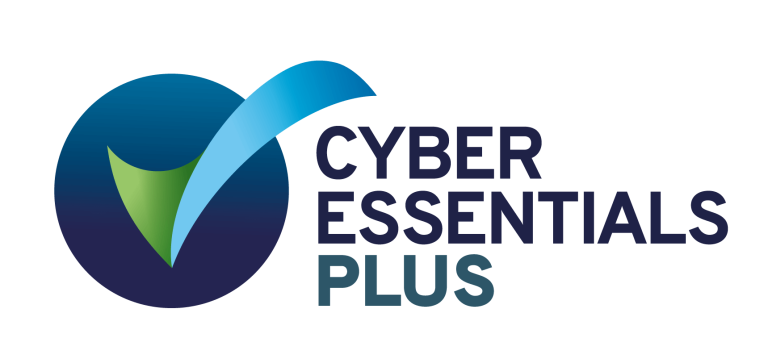Managing employee sickness is one of the more challenging aspects of running a business. As a manager or HR professional, you’re tasked with balancing the well-being of your employees with the needs of the business. One question that often arises is: how many sick days are acceptable before disciplinary action can be considered?
In the UK, the rules surrounding sickness absence and disciplinary procedures are complex, and it’s important to handle them with care. This guide will help you navigate the process, ensuring you make informed decisions that are fair, legal, and in the best interests of both the employee and the company.
Understanding Employee Sick Leave Entitlements
Statutory Sick Pay (SSP) and Employee Rights
First and foremost, it’s essential to understand the basics of Statutory Sick Pay (SSP) in the UK. Employees are entitled to SSP if they are off work due to sickness for at least four consecutive days, including non-working days. As of the latest update, SSP is £109.40 per week, and it can be paid for up to 28 weeks.
When Does SSP Apply?
SSP applies from the fourth day of sickness, known as the qualifying days. It’s important to note that the first three days of sickness are considered waiting days, and no SSP is paid during this period unless the employee has already had another period of sickness within the last eight weeks.
Company Sick Pay Policies
While SSP provides a safety net, many companies offer their own company sick pay schemes, which may be more generous. These policies vary significantly between organisations, so it’s crucial to be familiar with your company’s specific terms.
What Does Your Policy Say?
Your company’s sick pay policy should clearly outline how much sick leave an employee is entitled to and under what circumstances disciplinary action may be taken. It’s vital to ensure that all managers and employees are aware of these policies to prevent misunderstandings.
How Many Sick Days Are Too Many?
Patterns of Absence
One of the key considerations when deciding whether to take disciplinary action is the pattern of the employee’s absence. Frequent short-term absences, particularly if they follow a pattern (such as regularly calling in sick on a Monday or Friday), can indicate potential abuse of the sick leave policy.
Identifying Patterns
As a manager or HR professional, it’s important to track and review employee absences. Look for trends that might suggest the employee is not genuinely ill. For example, are they frequently sick after weekends, or do they always fall ill before or after public holidays? Identifying these patterns can help determine if further investigation is necessary.
The Bradford Factor
The Bradford Factor is a tool commonly used by employers to quantify the impact of employee absences. It’s based on the theory that frequent short-term absences are more disruptive than longer periods of sick leave. The formula for the Bradford Factor is:
Bradford Factor = S x S x D
- S is the number of periods of absence.
- D is the total number of days of absence.
When to Use the Bradford Factor
The Bradford Factor is particularly useful for identifying employees whose absences are having a disproportionate impact on the business. High scores can indicate a need for intervention, but it’s important to use this tool as part of a broader assessment, rather than relying on it exclusively.
The Legal Perspective: Handling Disciplinary Action
Fair and Consistent Process
When considering disciplinary action for sickness absence, it’s critical to follow a fair and consistent process. The Acas Code of Practice on disciplinary and grievance procedures provides guidance on how to handle these situations correctly.
Step-by-Step Approach
Start by inviting the employee to a formal meeting to discuss their absences. It’s important to approach this conversation with sensitivity, as there may be underlying health issues that the employee has not disclosed. During the meeting, explain the impact of their absences on the business and give them an opportunity to explain their side.
Reasonable Adjustments
If the employee has a disability, you have a legal obligation to consider making reasonable adjustments to their role or working conditions. This might include altering their working hours, providing additional support, or even modifying their duties.
Avoiding Discrimination Claims
Failing to make reasonable adjustments could lead to claims of disability discrimination. Therefore, it’s crucial to explore all possible accommodations before moving forward with disciplinary action.
Issuing a Warning
If, after the meeting and any reasonable adjustments, the employee’s attendance does not improve, it may be appropriate to issue a formal warning. This should be documented in writing, outlining the expected improvements and the consequences if these are not met.
Types of Warnings
There are typically three stages of warnings in a disciplinary process:
- Verbal Warning – Usually the first step, where the issue is formally raised but not yet documented on the employee’s record.
- Written Warning – If there’s no improvement, a written warning follows, making it clear that further absences could lead to more serious consequences.
- Final Written Warning – If the behaviour persists, a final warning is issued, indicating that continued absence could result in dismissal.
Supporting Employees Through Sickness
Early Intervention and Support
Rather than waiting for absences to escalate, it’s beneficial to take a proactive approach to managing sickness. Early intervention can often prevent long-term absences and help employees return to work sooner.
Regular Check-Ins
Consider implementing regular check-ins with employees who are frequently off sick. These conversations can help you understand any ongoing issues and provide an opportunity to offer support, whether it’s through occupational health referrals, counselling services, or flexible working arrangements.
Promoting a Healthy Work Environment
Creating a healthy work environment can reduce the likelihood of sickness absences. This includes encouraging a good work-life balance, promoting mental health awareness, and providing access to resources that support well-being.
Flexible Working
Allowing employees to work flexibly, either through remote working or adjusted hours, can significantly reduce stress and prevent burnout. Employees who feel supported and valued are less likely to take unnecessary sick days.
Return to Work Interviews
Conducting return to work interviews after each period of absence is a valuable tool in managing sickness. These interviews can help identify any ongoing health issues, assess the employee’s readiness to return to work, and reinforce the importance of good attendance.
Building Relationships
These interviews also provide an opportunity to build a positive relationship with the employee, demonstrating that their well-being is important to the company. This can foster a culture of trust and openness, making employees more likely to seek help if they are struggling.
Navigating the Balance Between Compassion and Business Needs
Sickness absence is a delicate issue, requiring a balance between compassion for the employee and the needs of the business. While it’s important to support employees through genuine illness, it’s equally crucial to address any patterns of absence that could indicate potential misuse of sick leave.
By understanding the legal framework, utilising tools like the Bradford Factor, and maintaining a fair and consistent approach, you can manage sickness absence effectively. At the same time, fostering a healthy work environment and offering support can help prevent issues from arising in the first place.
Remember, the goal is not just to reduce absences but to ensure that employees feel supported and valued. This approach not only benefits the individual but also contributes to a more productive and positive workplace overall.
Commonly asked questions about sick days and disciplinary
How many sick days can an employee take before disciplinary action is considered?
There isn’t a set number of sick days an employee can take before disciplinary action is considered in the UK. However, frequent short-term absences, especially if they form a pattern, may warrant a discussion. The key is to handle each case individually, considering the reasons for the absence, the impact on the business, and whether the employee is following company policy. Always ensure that any disciplinary action is fair, consistent, and in line with the Acas Code of Practice.
What is the Bradford Factor, and how does it help manage sickness absence?
The Bradford Factor is a tool used by employers to assess the impact of an employee’s absences. It calculates a score based on the frequency and length of absences, with higher scores indicating more disruptive attendance patterns. The formula is S x S x D (S = number of periods of absence, D = total number of days absent). It’s particularly useful for identifying employees who frequently take short-term sick leave, allowing managers to address potential issues early on.
What should I do if an employee’s frequent absences appear to follow a pattern?
If you notice a pattern in an employee’s absences, such as frequent sick days around weekends or holidays, it’s important to address the issue promptly. Start by holding a formal meeting with the employee to discuss your observations. Approach the conversation sensitively, as there may be underlying health or personal issues contributing to the pattern. Depending on the outcome, you may need to consider reasonable adjustments, offer support, or, if necessary, follow disciplinary procedures.
Are there legal obligations to make reasonable adjustments for employees with long-term health issues?
Yes, under the Equality Act 2010, employers have a legal obligation to make reasonable adjustments for employees with disabilities or long-term health conditions. This could include adjusting their working hours, providing additional support, or modifying their duties to accommodate their condition. Failing to make these adjustments could lead to claims of disability discrimination, so it’s important to explore all options before considering disciplinary action.
What are return-to-work interviews, and why are they important?
Return-to-work interviews are meetings held with employees after they return from a period of sickness absence. These interviews are important because they help identify any ongoing health issues, assess the employee’s readiness to return to work, and discuss any support they may need. They also reinforce the importance of good attendance and provide an opportunity to build a positive relationship with the employee, which can help prevent future absences.


